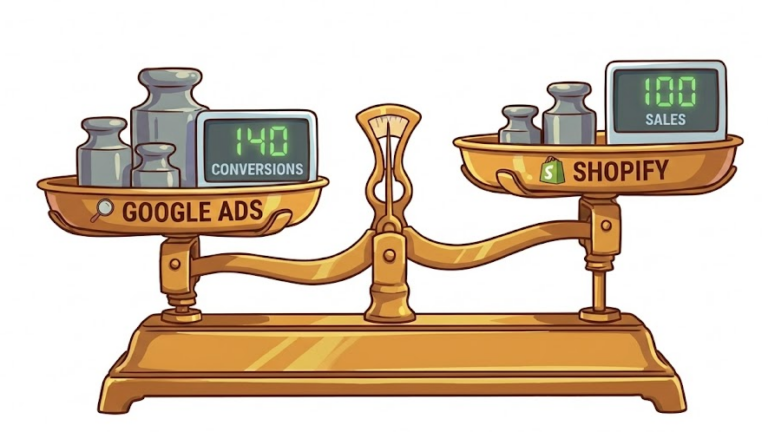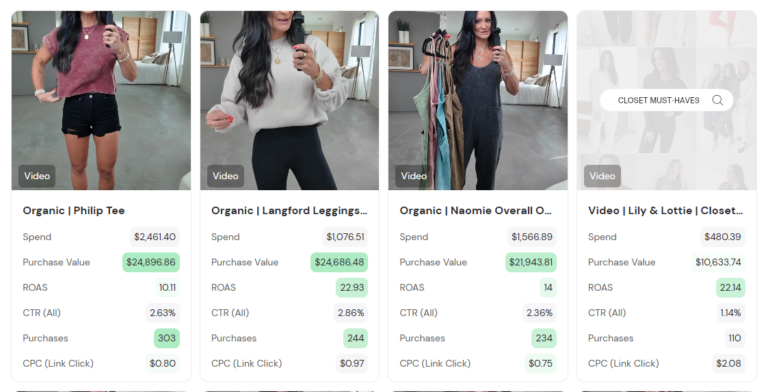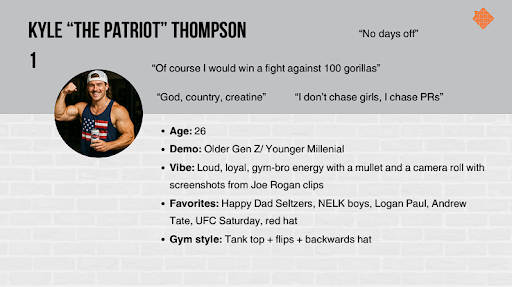If you want holiday ecommerce marketing examples of what not to do, just scroll your Facebook feed. Most of the ads look the same. There’s a bunch of discount-driven carousels, some generic product GIFs, and mostly static image ads that were obviously thrown together 15 minutes after some digital marketing agency told a client…
“We need Meta ads for the holidays.”
For the last few years, digital marketing experts have been pushing “platform first strategies” (or sometimes they call it “channel-led creative”) as the secret to make winning ads for e-commerce companies.
It used to work. But channel first is so 2024.
Content-First Marketing vs. Channel-First Marketing: What’s the Difference?


A channel-first marketing strategy starts with the platform.
“What will perform best on Meta?” “How do we make something that fits TikTok’s format?”
Yes, it’s still important to design ads that fit native specs like aspect ratios, text limits, and where NOT to put text to avoid having it covered by the comment button overlay, but every feed is flooded with the same recycled templates, trending audio, and generic hooks.
A template is not a strategy.
Content-first marketing starts with strategy.
The most effective ad strategy starts long before a single ad gets made.
It starts by defining what business outcomes you actually want. If you think that includes more views and/or clicks, please, please, keep reading.
Real business outcomes are things like:
- increasing repeat purchase rates
- Increasing top-line/profit margins
- increasing return on ad spend (ROAS)
- increasing average order value (AOV)
Then identify how you want to get there:
- Which SKUs have the healthiest profit margins?
- Which have strong lifetime value (LTV) or subscription potential?
- What does your marketing efficiency ratio (MER) or blended ROAS data say about where the dollars actually work hardest?
Once you know what you’re trying to achieve, you start aligning those goals with the customer:
- When do they buy this product (seasonality or gifting moments)?
- Why do they buy it (emotional or practical motivation)?
- How do they use it (what role does it play in their life)?
That’s how a content-first ecommerce strategy takes shape. The story forms at the intersection of your data and your customer. Business goals on one side, human behavior on the other.
Story-Driven Creative: The Secret to Ads That Don’t Feel Like Ads
Once you know what you’re selling, why it matters, and who it’s for, you can create ads that don’t just feel like ads.
That’s how we created these campaigns for Jackson & Perkins.
The core focus for this 153-year-old company going into Q4 was simple but high-stakes: Move 25,000 or so of their highest margin holiday best sellers:
Potted Amaryllis and Plantable Decorated Mini Trees.
Our creative strategy began with the simple question of “Why do people buy these two products?”
The answer was easy to find their data. They’re usually given as gifts. And we know these kinds of gifts are an emotional purchase, so video was the obvious choice for the primary format because it’s the best medium for sprinkling in feelings, humor, and story.
We’d still support the push with static sale ads on Meta, but those would be the reinforcement, not the headline act.
The mini plantable Christmas trees became a “living gift” that grows year after year and means more than another throwaway present.
The amaryllis campaign leaned into beauty and longevity by showing how a live flower gift can outlast a basket of snacks or a gift card.
Story Before Specs: How to Build Ads That Actually Convert
These campaigns worked because every decision came from strategy, not format. We didn’t start with “What’s trending on Meta?” We started with “What matters to the customer?”
Then we determined the best type of content to get that message across. And only after that did we worry about which platforms would be best to deliver it.
That’s the order that makes content-first marketing work.
Start with the business goal, build the story, and then shape it to fit wherever it needs to go. Because when the story comes first, the creative feels natural everywhere, and the results don’t depend on an algorithm to make them work.
If you want help building your content-first strategy:
Talk to a strategist.
FAQs
What is a content-first marketing strategy?
A content-first marketing strategy prioritizes storytelling, customer insight, and business goals before choosing platforms or ad formats.
Why are content-first ads more effective?
Because they connect emotionally and strategically—building trust, engagement, and performance across every channel.
How do I create content-first ads for e-commerce?
Start by analyzing your data and customer insights to find emotional motivations. Build a story around that truth, then choose platforms to amplify it.






no replies